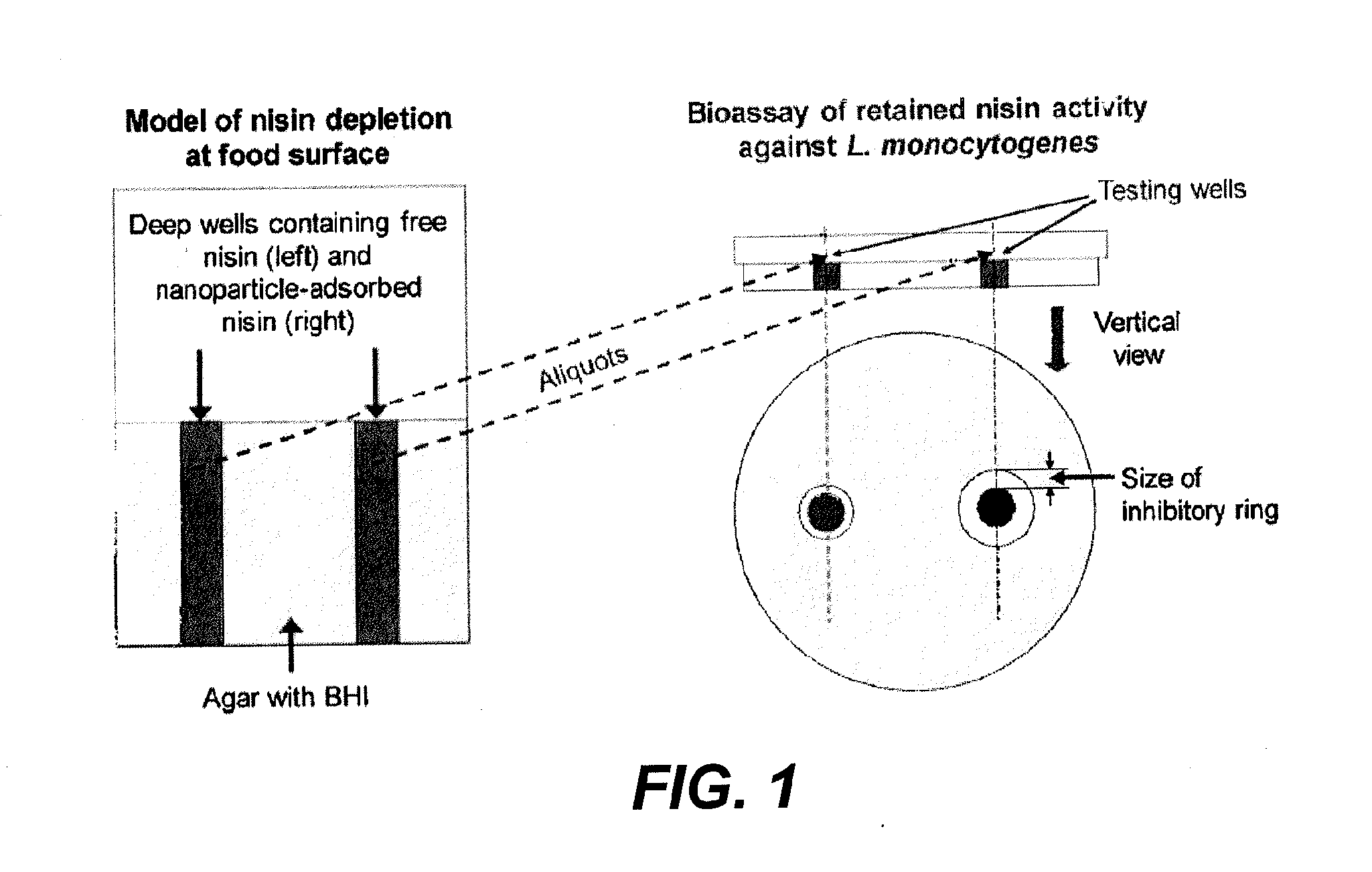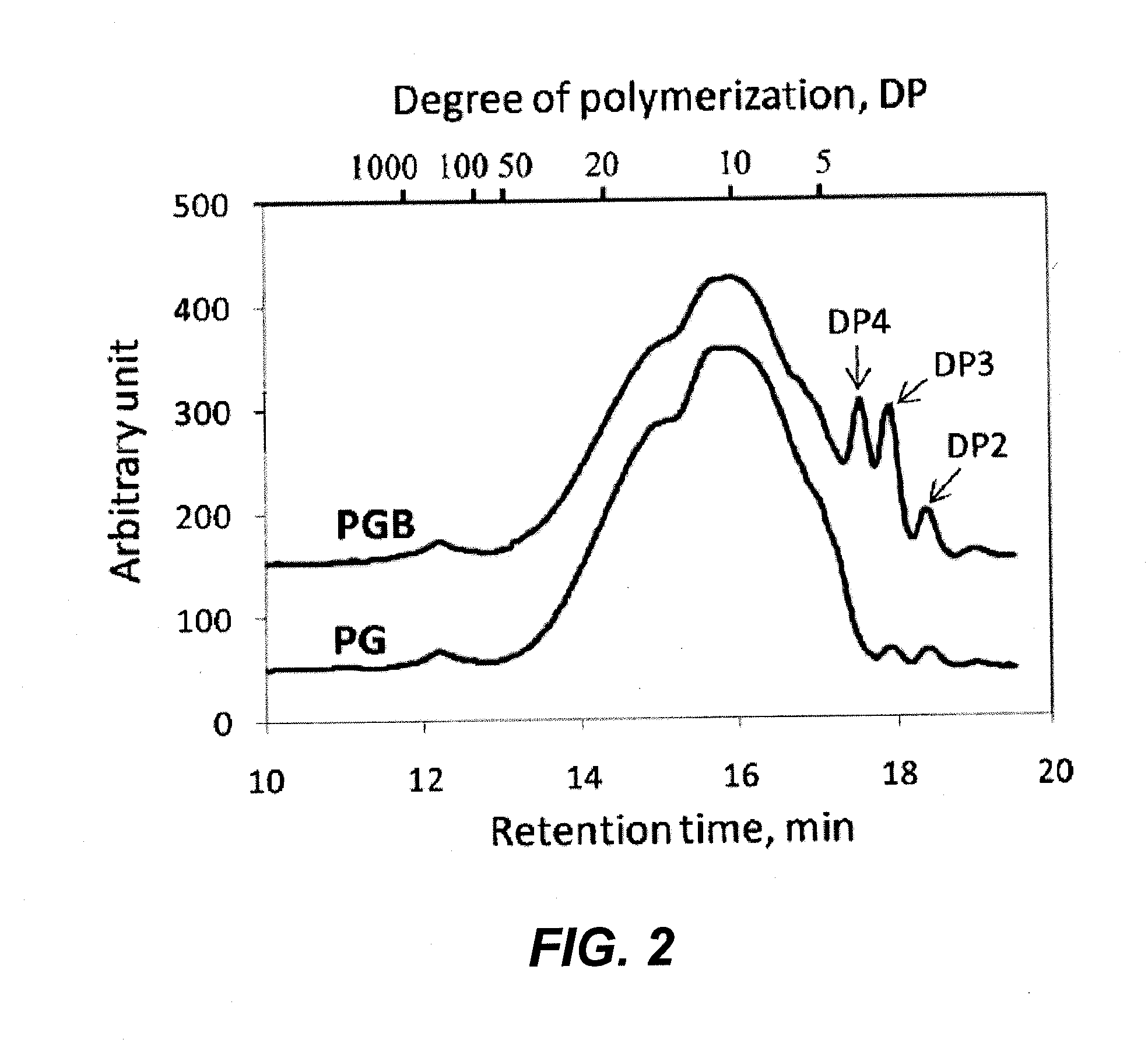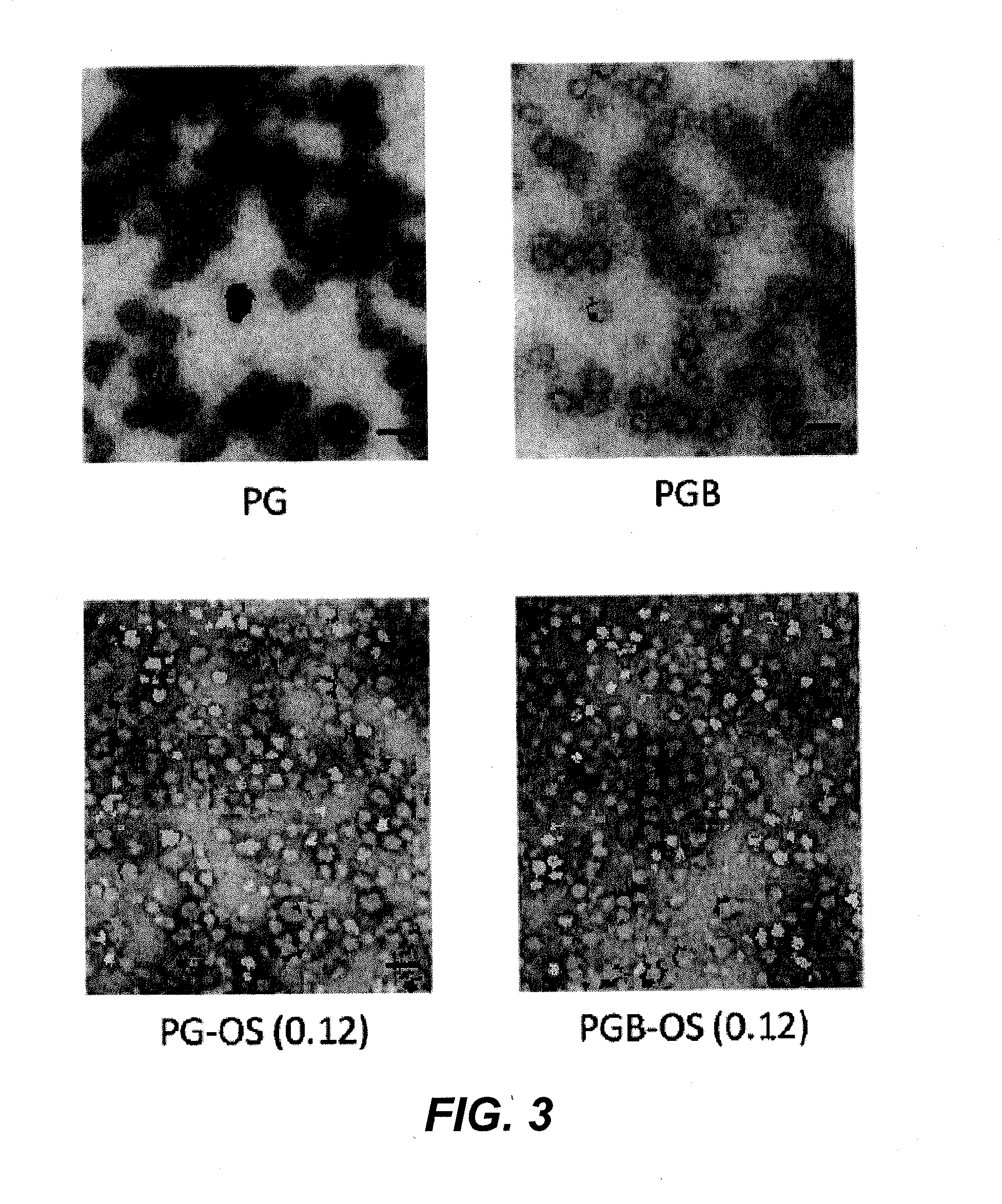Carbohydrate nanoparticles for prolonged efficacy of antimicrobial peptide
a technology of carbohydrate nanoparticles and antimicrobial peptides, which is applied in the field of nanoparticles, can solve the problems of reducing the ability of bacteriocin to inhibit the growth of bacteria at the surface, reducing the antimicrobial activity of compounds, and often being subject to rapid depletion
- Summary
- Abstract
- Description
- Claims
- Application Information
AI Technical Summary
Benefits of technology
Problems solved by technology
Method used
Image
Examples
Embodiment Construction
[0026]As further described herein, soluble nanocarriers can reduce the depletion of active compounds during storage without sacrificing their availability in times of need (i.e. in the presence of pathogenic contamination). A number of colloidal assemblies have been explored, such as polymersomes, particle-stabilized emulsions and colloidosomes, and layer-bylayer microcapsules. Over a century ago, Pickering (1907) indicated that colloidal particles could be used to stabilize emulsions, forming so-called “Pickering emulsions.” Recently, there has been a resurgence of interest in micro- and nanoparticle-stabilized emulsions, mostly due to the use of the interfaces as templates for nano-construction. The distinct properties of these emulsions are attributable to the very large free energy of adsorption of the particles, which usually leads to highly stable emulsions (Aveyard et al., 2003).
[0027]Associated with particle-stabilized emulsions, the concept of “colloidosomes” was proposed b...
PUM
| Property | Measurement | Unit |
|---|---|---|
| Surface charge | aaaaa | aaaaa |
Abstract
Description
Claims
Application Information
 Login to View More
Login to View More - R&D
- Intellectual Property
- Life Sciences
- Materials
- Tech Scout
- Unparalleled Data Quality
- Higher Quality Content
- 60% Fewer Hallucinations
Browse by: Latest US Patents, China's latest patents, Technical Efficacy Thesaurus, Application Domain, Technology Topic, Popular Technical Reports.
© 2025 PatSnap. All rights reserved.Legal|Privacy policy|Modern Slavery Act Transparency Statement|Sitemap|About US| Contact US: help@patsnap.com



